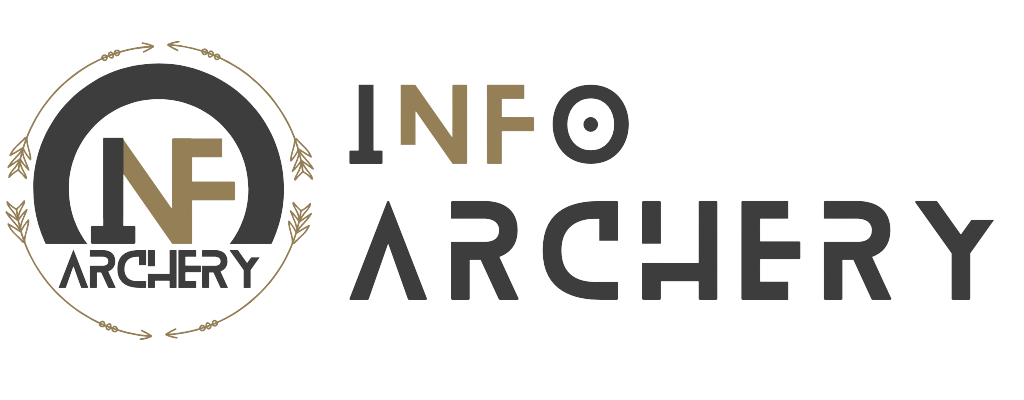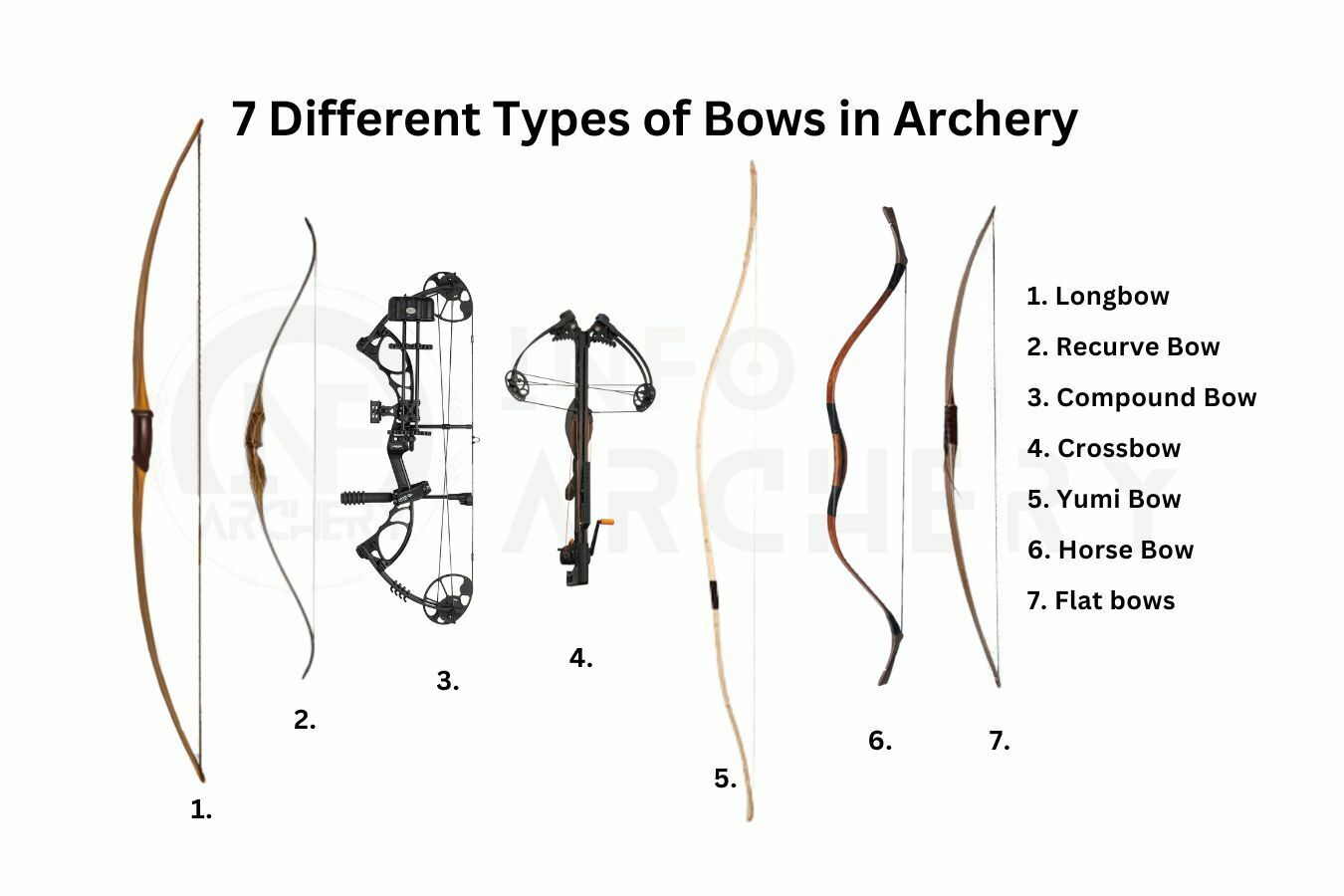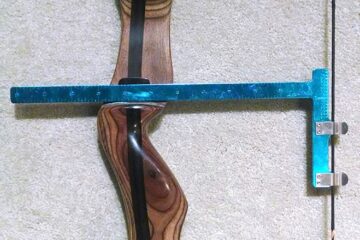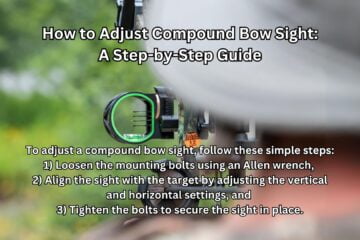There are different types of bows in archery, each with its unique advantages and disadvantages.
The main types of bows in archery are recurve bows, compound bows, and longbows. Recurve bows are traditional, simple, and versatile, while compound bows are modern, high-tech, and adjustable.
Longbows are a classic traditional design that requires a lot of skill and strength to use effectively. Archery has been practiced for centuries and has evolved into a sport that requires skill, precision, and strength. Different types of bows have been developed to suit different purposes and skill levels.
In this article, we will explore the three main types of bows in archery, their features, and their advantages and disadvantages.
Whether you are a beginner or an experienced archer, understanding the differences between these bows can help you choose the right one for your needs.
Recurve Bow
Definition And Explanation Of The Recurve Bow
The recurve bow is a popular type of traditional bow used in archery. It is named after its distinctive shape, with the tips of the bow facing forward, and then bending back towards the archer. The bow is known for its smooth draw and release, making it a favorite among both beginners and experienced archers.
The recurve bow can be made from a variety of materials such as wood, carbon fiber, or fiberglass.
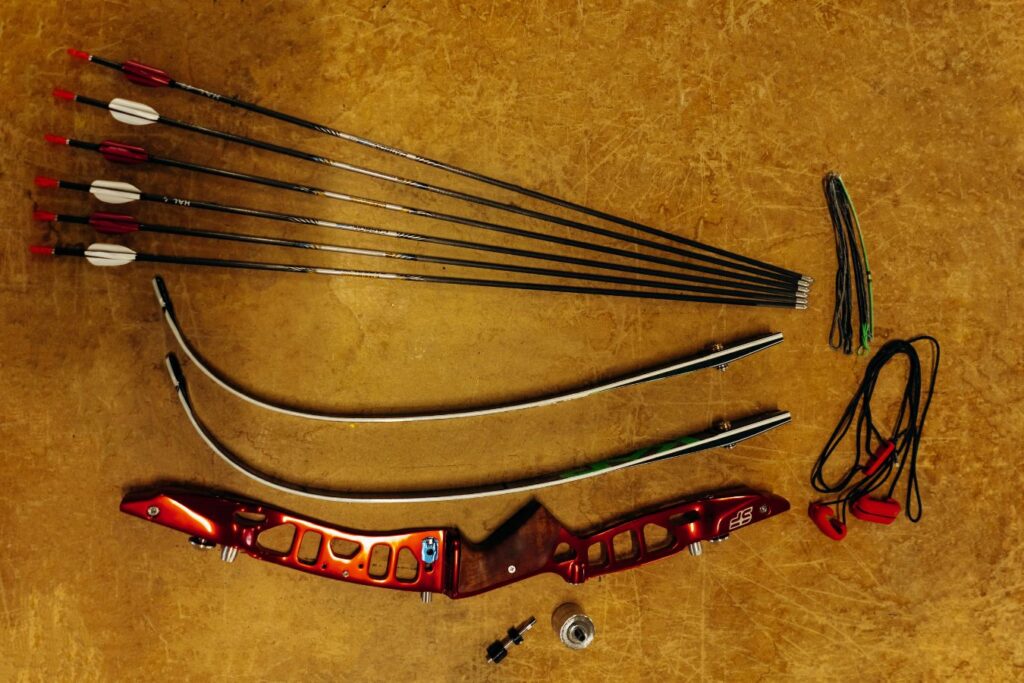
Advantages And Disadvantages Of Using A Recurve Bow
Advantages:
- Easy to handle: The recurve bow is relatively easy to handle and is perfect for beginners.
- Strength and power: The bow’s design provides an archer with both strength and power.
- Versatile: Recurve bow is highly versatile and can be used in various styles of archery, such as target archery, field archery, and traditional archery.
Disadvantages:
- More effort required: Recurve bow requires an archer to put more effort into drawing the string.
- Limited range: It has a limited range compared to other types of bows.
- Noisy: The bowstring makes a lot of noise when releasing an arrow, making it difficult to use when hunting.
Key Features To Consider When Choosing A Recurve Bow
- Bow length: Choose the bow length according to the draw length and height of the archer.
- Weight: The weight of recurve bow is crucial since it impacts the speed of the arrow and the strength required to draw the bow. Choose a weight that is comfortable to handle.
- Material: The material determines the performance and durability of the bow. Beginners or those on a budget can opt for wooden bows while professional archers can choose carbon fiber or fiberglass for the highest performance.
- Hand orientation: The bow’s hand orientation is an essential consideration. The archer must select the bow that matches their hand orientation, whether left or right.
Recurve Bow For Beginners And Professionals
Recurve bow is a perfect choice for both beginners and professionals in archery. Beginners may prefer this type of bow since it is easy to handle, provides consistent performance, and requires less maintenance. Professionals, on the other hand, can enjoy the power and
Recurve bow is an excellent type of bow for those who are looking for versatility and convenience.
Compound Bow
Definition And Explanation Of The Compound Bow
A compound bow is a modern type of bow that utilizes a levering system of cables and pulleys to bend the limbs. It is also equipped with a series of cams, which control the bow’s weight and let-off. This design provides superior accuracy and speed compared to traditional bows, making it a popular choice for both hunting and target shooting.

Advantages And Disadvantages Of Using A Compound Bow
Advantages:
- Superior accuracy and speed due to the levering system and cams.
- Greater power and kinetic energy because of the compound bow’s design.
- Adjustable weight and let-off options to suit each individual’s needs.
- Suitable for long periods of shooting due to the let-off and reduced strain on the shooter’s muscles.
Disadvantages:
- More complex mechanism requires regular maintenance to ensure proper functionality.
- Typically more expensive than traditional bows.
- Not as lightweight and portable as other bow types.
Key Features To Consider When Choosing A Compound Bow
When choosing a compound bow, several key features should be taken into consideration:
- Draw weight and length: The arrow’s weight and the shooter’s draw length should be matched to the bow’s specifications to ensure optimal performance.
- Let-off: This refers to the point where the cam rotates and reduces the weight that the shooter has to hold. A higher let-off percentage is suitable for beginners or hunters who require less physical strain and fatigue.
- Brace height: This is the distance from the grip to the bowstring while it is at rest. A shorter brace height provides more speed, but it requires more precise shooting techniques.
- Axle-to-axle length: This is the measurement from one cam to another. Longer axle-to-axle lengths provide stability, making it easier to aim, while shorter lengths are more maneuverable.
Compound Bow For Beginners And Professionals
Compound bows are suitable for both beginners and professionals alike.
Beginners should start with a lower draw weight and higher let-off to prevent fatigue and to aid accuracy. As they progress, they may increase the draw weight and lower the let-off to enhance their performance.
Professionals typically require a higher draw weight and lower let-off to maximize the bow’s speed and power. They may also prefer customization options such as adjustable sights, stabilizers, and arrow rests to suit their needs.
Longbow
Types Of Bows In Archery: Which One Suits You?
Archery is an exciting sport that requires patience, practice, and perseverance to hone your skills. A crucial aspect of mastering this skill is selecting the right bow. There are many types of bows to choose from, each with its unique characteristics.
We will delve into the primary types of bows in archery, focusing on the longbow.

Definition And Explanation Of The Longbow
The longbow is the oldest bow design, with its origins dating back to the medieval times of the english and welsh armies. The longbow is typically made from a single piece of wood and can range from 5 to 6 feet in length.
It has a characteristic ‘d’ shaped cross-section, with wide, rounded limbs.
Longbows are known for their smooth draw and impressive power. They deliver a high degree of accuracy, with a long range. Archers have to draw the bowstring using fingers, without the aid of any mechanical equipment. This traditional approach to archery demands excellent technique, making it a popular choice for competitive archers worldwide.
Advantages And Disadvantages Of Using A Longbow
Every bow comes with its unique set of advantages and disadvantages. Here are some of the pros and cons of using a longbow.
Advantages
- Longbows are lightweight, making it easy to carry around during long practice sessions or competitions.
- Longbows have a simple construction with few mechanical parts, making them easy to maintain. They also tend to be quieter than their compound bow counterpart, reducing noise distractions during competitions or hunting scenarios.
- Longbows offer a great degree of accuracy at long distances, making them ideal for field archery or long-range target shoots.
- Traditional archers who enjoy a particular sense of nostalgia and connection to the sport tend to prefer longbows.
Disadvantages
- Longbows demand significant physical strength, making it difficult for people to draw the heavy bowstring.
- Lack of sights, weights, and other mechanical devices makes it much harder to aim. This makes it imperative to rely solely on an archer’s skill, which can take a lot of time to develop.
- The unique design of longbows makes them difficult to aim in close combat or confined spaces.
- Unlike other modern bows, the longbow’s arrow must be matched to its bow weight and length, making it challenging to mix and match arrows from a standard collection.
Key Features To Consider When Choosing A Longbow
Choosing the correct longbow for your level of skill, purpose, and body type is crucial. To help you decide, here are some essential features to consider:
- The length of the longbow: Longbows come in various lengths that cater to different body types. Choose a longbow that fits your body type and skill level.
- The draw weight: Longbows come with varying draw weights that cater to different skill levels. Beginners should start with lower draw weights and work their way up as they develop their strength and skills.
- Traditional style or modern: Longbows have a range of designs, some sticking to their traditional design, while others come with modern enhancements. Consider what style suits you best.
- Budget: Longbows come in different prices, choose one that suits your budget without compromising on quality.
Longbow For Beginners And Professionals
A longbow is an excellent choice for beginners, intermediate, and professional archers who want a traditional approach to archery. However, beginners may find it challenging to develop longbow shooting techniques without proper guidance and coaching. Seek advice from experienced archers or skilled professionals to prevent developing bad habits that could compromise accuracy.
A longbow is an impressive traditional archery style that delivers the best accuracy at long ranges. When choosing a longbow, consider the essential features above to find one that suits your preferences and budget.
Crossbow
Is a modern take on traditional bows that every archer loves. It’s an excellent choice for hunters, target shooters, and even beginners who are trying to enter the world of archery. In this section, we’ll discuss the definition and explanation of the crossbow, its advantages and disadvantages, and key features to consider when choosing one.
Additionally, we’ll also give tips on selecting the best crossbow for beginners and professionals alike.

Definition And Explanation Of The Crossbow
A crossbow is a weapon that consists of a horizontal bow-like assembly, mounted on a frame. The crossbow works by firing an arrow, or bolt, that’s quarreled to the bow via a trigger mechanism. It can be used for hunting or target shooting, and it’s particularly useful in situations where the hunter needs to remain hidden while shooting.
Advantages And Disadvantages Of Using A Crossbow
Advantages:
- Crossbows are easier to aim and shoot than traditional bows, which makes them an excellent choice for beginners.
- They have higher accuracy due to their design and trigger mechanism, which means you’re more likely to hit your target.
- Crossbows are compact and easy to transport, making them ideal for hunting and target shooting on the go.
- They have a high draw weight, which means they can be used to take down larger animals more easily.
Disadvantages:
- Crossbows can be heavy and cumbersome to carry around for a long time.
- They have a slower firing rate than traditional bows, which can make them less suitable for some hunting situations.
- They require more maintenance than traditional bows, particularly the string.
Key Features To Consider When Choosing A Crossbow
When choosing a crossbow, there are a few key features to consider:
- Draw weight – this is the force needed to pull back the bowstring and fire the arrow.
- Velocity – this is how fast the arrow travels once it’s fired.
- Axle-to-axle length – the distance between the center of the two limbs of the crossbow, which can affect accuracy and stability.
- Length and weight – larger crossbows can be more precise, but they may be too cumbersome for some hunters or target shooters.
- Design and material quality – a well-made crossbow will be more durable and accurate, but it may also cost more than lower-quality models.
Crossbow For Beginners And Professionals
For beginners, we recommend starting with a lower draw weight crossbow. This will allow you to get used to the weapon’s handling and trigger mechanisms while also building up your strength and accuracy. We also recommend choosing a lighter and more compact crossbow that’s easier to carry around, particularly if you’re going on a hunting trip.
For professionals, we suggest investing in a higher quality, more durable crossbow with a higher draw weight and velocity. This will allow you to take larger game and shoot with greater accuracy over a longer distance. Additionally, you may want to consider buying a crossbow with a longer axle-to-axle length, which will provide greater stability and accuracy.
The crossbow is an excellent choice for archers, hunters, and target shooters alike. Its unique design and trigger mechanism provide greater accuracy, while its compact size makes it easy to transport and use in the field. Whether you’re a beginner or a professional, choosing the right crossbow takes careful consideration of its key features and your individual needs.
Traditional Vs. Modern Bows
Types Of Bows In Archery: Which One Suits You?
Archery is a fun and challenging sport that has been around for centuries. It requires skill, accuracy, and patience. One of the essential elements of archery is the bow. Over the years, the design of bows has evolved greatly. Today, there are two main types of bows: traditional and modern.
Comparison Between Traditional And Modern Bows
Traditional bows have been in use for thousands of years. They have a classic design and are typically made of wood and animal hide. In contrast, modern bows are made of more advanced materials such as carbon fiber. They have a sleek, aerodynamic design, making them more efficient than traditional bows.
Key Differences And Similarities Between The Two Types Of Bows
Traditional and modern bows have several key differences and similarities. Here are some of them:
Differences:
- Traditional bows are usually heavier than modern bows, which can make them more challenging to use.
- Traditional bows are generally less efficient than modern bows, meaning they require more physical effort to get the same amount of power.
- Traditional bows require more maintenance than modern bows, as they are made of natural materials that can deteriorate over time.
- Modern bows are more customizable than traditional bows, allowing archers to adjust the draw length, weight, and other features to suit their needs.
Similarities:
- Both traditional and modern bows require skill, accuracy, and patience to use effectively.
- Both types of bows can be used in a variety of situations, from hunting to target shooting.
- Both types of bows require regular practice to improve accuracy and skill.
Which Type Of Bow Is More Suitable For Beginners And Professionals
When it comes to choosing the right type of bow, there is no one-size-fits-all answer. Beginners may find traditional bows to be more manageable, as they are typically less powerful than modern bows. This can make them easier to control and less intimidating for novice archers.
However, modern bows can be more forgiving and have more advanced features that help archers hit targets consistently. They are also more efficient, making them ideal for professional archers who need to hit targets accurately at longer distances.
Ultimately, the best type of bow will depend on your personal preferences and goals. If you’re just starting with archery, consider trying both traditional and modern bows to see which one suits you best. With practice, you’ll become a skilled archer, no matter which type of bow you choose.
Frequently Asked Questions On Types Of Bows In Archery
What Are The Different Types Of Bows In Archery?
There are three main types of bows in archery: recurve, compound, and longbow. Recurve bows have tips that curve away from the archer, compound bows use cams and pulleys to reduce the required force, and longbows are traditionally made from a single piece of wood or bamboo.
What Is A Recurve Bow?
A recurve bow is a popular type of bow in which the tips of the bow curve away from the archer. The curved design allows the bow to store more energy, resulting in faster and more accurate shots. Recurve bows are commonly used in
What Is A Compound Bow?
A compound bow is a modern type of bow that uses cams and pulleys to reduce the required force of the archer. This allows the archer to hold the bowstring for a longer period, resulting in more accurate shots. Compound bows are commonly used in hunting and target shooting.
What Is A Longbow?
A longbow is a traditional type of bow that is made from a single piece of wood or bamboo. The design is simple and the bow is typically taller than the archer. Longbows require more skill to handle than other types of bows due to their lack of technology.
Conclusion
Archery is an engaging and exciting sport that requires skill, patience, and precision. Like any sport, it’s important to know the equipment involved to participate effectively. There are five primary types of bows in archery: longbows, recurve bows, compound bows, crossbows, and traditional Asian-style bows.
Each type of bow has its unique features, advantages, and disadvantages. Longbows are known for their simplicity, elegance, and long range, while recurve bows are versatile and common in Olympic competitions. Compound bows are popular for their mechanical technology, making them more accurate and powerful, and crossbows have been used in hunting and warfare for centuries.
Traditional Asian-style bows have a rich history, with different types used for various purposes. Regardless of the type of bow, learning how to use it and finding the best fit for you is essential to excelling in archery. Explore and discover the type of bow that suits you best and enjoy the fantastic world of archery!
